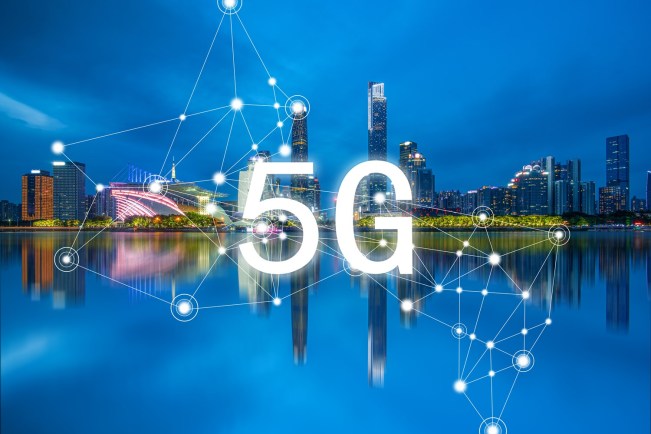How 5G will enhance Wi-Fi in three industries

Despite the hype of 5G, Wi-Fi and 5G together will play an
important role in enterprise use cases, including remote patient care and smart
manufacturing.
Nowadays, technology professionals may find that when
browsing technology headlines any morning, they will find it difficult not to
encounter stories about 5G. Like artificial intelligence and blockchain, 5G is
one of the most discussed technology trends today.

Many 5G hype is taken for granted, but it is important to
remember that 5G is still a very new technology. In addition to faster speeds,
once 5G is truly realized, it will provide low latency, higher capacity, and
higher data rates, and it can open the door to new applications. The dramatic
claim that 5G will replace Wi-Fi is unfounded. Can you imagine a university
campus or hospital dismantling all wireless infrastructure and all Wi-Fi
equipment and transferring everything to 5G? It won’t work today.
The reality is that in the foreseeable future, Wi-Fi and
cellular networks will coexist, each serving different use cases and working
together to provide the best user experience. Below are three examples from
different industries to show how 5G can enhance existing Wi-Fi deployments.
The road to the smart factory goes through 5G
Few industries are as affected by 5G as the manufacturing
industry. In the manufacturing industry, the emergence of cellular technology
may stimulate the next industrial revolution. Although most factories continue
to operate on Wi-Fi networks, a wave of smart factories based on 5G technology
has begun to emerge. The opportunities are huge; according to the Capgemini
Research Institute report "Smart Factories @ Scale", by 2023, smart
factories can add 1.5 to 2.2 trillion US dollars to the global economy each
year.
5G brings many benefits to the manufacturing industry. It
can power mobile devices and robots, thereby automating more manual processes
and improving production efficiency. For example, Ericsson's smart factory in
Lewisville, Texas uses 5G connectivity to achieve agile operations and flexible
production. In this facility, time-consuming processes such as assembly,
packaging and product handling can be completed by drones and automated
trolleys.
John Deere also just invested $500,000 in a private 5G
license to improve its manufacturing plant. The company is seeking to deploy 5G
to make its production line more flexible than traditional wired networks. In
addition, the company is using 5G for smart vision systems to support worker
safety.
As of now, requiring manufacturers to dismantle and replace
all existing wireless infrastructure and equipment with 5G is a daunting
task—not to mention, it is unnecessary. Wi-Fi is a viable option that can meet
many needs in today's factories. The most likely scenario is that the factory
will combine Wi-Fi and 5G equipment to deploy different wireless technologies
for different use cases and applications according to specific bandwidth
requirements.
5G will create a new immersive learning experience in the
classroom
Although schools will always rely on Wi-Fi technology to
connect devices such as computers and tablets, education is a mature area of
5G-related innovation. School days are usually defined by whiteboards,
projectors, and brochures-these tools have been the foundation of generations
of schools. But imagine that in a classroom, students can be transported to a
geological location or space station. They can walk around and explore their
surroundings without leaving the classroom.
The high bandwidth and low latency of 5G unleash the power
of augmented reality (AR) and virtual reality (VR) technologies, which can make
these experiences possible and provide students with new ways to participate in
courses. For example, Cleveland’s K-8 Charter School Entrepreneurship
Preparatory School was the first school in the United States to obtain 5G
technology from Verizon, as part of Verizon’s plan to provide advanced
technology to 100 schools by 2021. The school’s laboratory is equipped with
virtual reality and augmented reality stations, allowing students to see a
wealth of computer-generated images and do things such as checking the stars up
close or traveling inside the human body.
Few schools today are equipped with such forward-looking
technology. But as 5G continues to mature and popularize, this kind of hands-on
learning may become the norm.
5G can expand telemedicine and remote monitoring in
healthcare
The COVID-19 pandemic has accelerated the large-scale
transformation of the healthcare sector and stimulated the widespread adoption
of telemedicine and remote monitoring to ensure that non-coronavirus patients
are as far away as possible from hospitals. Wi-Fi has become an important way
to provide medical services because patients now use their home wireless
connections to communicate and receive care from doctors and nurses more than
ever.
5G may change the rules of the game, expanding telemedicine
in areas where it is most needed. Although the telemedicine industry has
developed rapidly in the past few months, rural communities often cannot access
the same virtual medical services due to the lack of reliable broadband. By
extending 5G to rural areas, millions of patients will be able to access key
treatments. This is important during a pandemic, and telemedicine also has
long-term benefits for rural communities, but due to the lack of provider
options in rural areas. In the past 10 years alone, more than 120 rural
hospitals have closed, creating an urgent need for accessible remote care.
Although it will never replace Wi-Fi in the hospital campus
environment, 5G has great potential for real-time remote monitoring through
medical IoT devices. Remote monitoring is often hindered by slow network speeds
and unstable connections.
Due to their higher capacity and lower latency, 5G-enabled
IoT devices and wearable devices can help healthcare providers ensure that they
receive data in real time so that they can provide the best care and make quick
decisions.
There is demand for 5G and Wi-Fi
5G has great potential and will play a key role in improving
and transforming interconnectivity. However, in the hype, people have
overlooked the almost impossible to exaggerate role Wi-Fi currently plays in
maintaining our institutions and systems, as well as the strength and
reliability of Wi-Fi technology. Wi-Fi will continue to exist, but in the next
few years, 5G will begin to be integrated in multiple industries to complement
and improve user experience.